#since licorice can be salty as well as the Licorice Sea
Explore tagged Tumblr posts
Text

Oh yeah so I finally found that original image with those flavors of certain characters. Well actually I found it a week or two ago, I just forgot about it until I was doing cleanup this morning
Anyways, so I’m aware that these aren’t actually talking about the flavors of the Cookies themselves. This is about the macarons based on each Cookie and what flavors they are
But I kind of want to take these and make them into headcanon flavors. Or at least, they’re tertiary flavors/something that’d be picked up in a dough analysis
Like for instance, Dark Cacao has a trace amount of sea salt in his dough, and similarly Eclair has trace amounts of birthday cake in his. Cotton has some milk in hers, so perhaps she has some ancestry from the Milk Tribe. Sea Fairy tastes similar to Fruity Pebbles, which tbh vaguely remind me of the color of coral, so I like to think she could have originally been a coral based Cookie, assuming she was something before being Sea Fairy. Dark Enchantress has a berry flavor to her. I don’t really have ideas for the other three but there’s things you could come up with
Again I know these aren’t canon, but I can at least incorporate them into headcanon if I want to
#note that the Dark Cacao having sea salt has somewhat evolved#into that he has some ancestry from the Licorice Tribe#since licorice can be salty as well as the Licorice Sea#which is a sea so maybe it has salt#I don’t know it’s not the most obvious connection#but it’s the best I can make with the tribes we know of#anyways#cookie run#cookie run kingdom#dark cacao cookie#eclair cookie#cotton cookie#sea fairy cookie#dark enchantress cookie#dark choco cookie#gingerbrave#herb cookie#random stuff#headcanons
178 notes
·
View notes
Text
Submitted via Google Form:
What might I need to take into account when I have multiple very large swaths of land being reclaimed? I'm talking large-scale projects, it would be comparable to having the waters between Great Britain and Ireland being reclaimed.
Licorice: If you want to learn about how to reclaim land from the sea, nobody knows more than the Dutch. Sources concur that around 17% of the Netherlands has been reclaimed from the sea, and according to wikipedia, which has an article dedicated to Dutch land reclamation, a quarter of the country would be under water if not for their continued maintenance of dykes, canals, and the the rest of the system. The Dutch have been reclaiming land from the sea since the Middle Ages, so they make a fascinating case history of what can be done as technology evolves - and also, of course, how need drives technological innovation, since necessity is the mother of invention.
Here’s a short article from the Royal Society of Chartered Surveyors on some recent reclamation projects. You can find out more by researching the ones that are closest to the kind of project you envisage for your world.
https://ww3.rics.org/uk/en/modus/natural-environment/land/out-of-the-deep--7-massive-land-reclamation-projects--.html#:~:text=Land%20reclamation%20has%20been%20happening,from%20the%20sea%20or%20lakes.
One thing you’ll need to consider is what the land is going to be used for. Preparing reclaimed land for agriculture takes longer, I think, than reclaiming land for high-density human occupation. If it’s reclaimed from the sea there will be a degree of saltiness that needs to be removed before standard food crops can be grown.
The Aztec city of Tenochtitlan might also be an interesting study for you. If I recall correctly, Tenochtitlan was a massive floating city made of artificial islands, rather than reclaimed land per se, and the water was fresh rather than salt, so a different situation from that of Holland.
Tex: So the Irish Sea, which sits between England and Ireland, has a width of 200 km, surface area of approximately 46,000 square km, a depth between 80 and 275 meters, and a water volume of 2,800 cubic km (Wikipedia). There’s other bodies of water technically between the two islands, but this one is eponymous and holding to the classical definition of a sea, so I figure it’s the best example to have on hand. Where is that much water going? Where are you getting that much dirt? Is this going to adequately match up to the soil and rock compositional layers of the islands bordering it? Will this be, relevantly, earthquake-proof (i.e. will the dirt stay where you put it)? What organisms are being deprived of their environment by these changes? How will this change water movement overall, and will it negatively impact the islands’ shape and their inhabitants’ well-being by unexpected rearranging of waterways? What about the economy? This is a major change in trade routes, and a lot of money presumably being sunk (ha) into changing topography. What prompted this? Is this the best solution for the given problem? Was there a problem in the first place that even needed solving, much less to this degree of influence? What do the local populations think of this? How will this affect the climate and ecology of surrounding areas (say, France)?
Wootzel: We were a bit confused about what you meant when you first sent in this question, so if the above answers aren’t what you’re looking for, please feel free to re-ask and clarify!
8 notes
·
View notes
Text
It is a nation on the planet which is truly genuine about the desire for its nourishment, it is Turkey. Turkish individuals cook each and every vegetable on the planet and in the most delectable way that is available. Because of nearness of this place to the ocean, it has some fish impact, as well. Turkey is likewise prestigious for the pastries individuals make here, and shockingly the treats are free of sugar. They utilize diverse flavors to make forsakes sweet, solid and delicious.

Turkish food shifts the nation over. The cooking of Istanbul, Bursa, Izmir, Gaziantep, and rest of the Aegean locale acquires numerous components of Ottoman court food, with a lighter utilization of flavors, an inclination for rice over bulgur, koftes and a more extensive accessibility of vegetable stews (türlü), eggplant, stuffed dolmas and fish. The cooking of the Black Sea Region utilizes angle widely, particularly the Black Sea anchovy (hamsi) and incorporates maize dishes. The food of the southeast (e.g. Urfa, Gaziantep, and Adana) is celebrated for its assortment of kebabs, mezes and batter based sweets, for example, baklava, şöbiyet, kadayıf, and künefe.
Particularly in the western parts of Turkey, where olive trees develop bounteously, olive oil is the real kind of oil utilized for cooking.The foods of the Aegean, Marmara and Mediterranean districts are rich in vegetables, herbs, and fish. Focal Anatolia has numerous well known claims to fame, for example, keşkek, mantı (particularly from Kayseri) and gözleme.
Olive oil has been a staple in Turkish kitchens for hundreds of years.Baldo Rice with large grains is ideal for pilaf, while Calrose or other small grain rice is better for fillings.Yellow onions are the flavor base of many Turkish dishes.Tomato paste is used to add color and flavor to many recipes, hot and cold. Turkey is famous for its endless variety of hot and cold eggplant dishes like Musakka, roasted eggplant salad, and even eggplant jam. Japanese or Italian eggplants work best for general cooking, grilling and stuffing. Globe eggplants yield lots of pulp for mashes and salads.Creamy red lentil soup is served for breakfast, lunch, and dinner and to break the daily fast during the month of Ramadan.Good ol’ white flour is the main ingredient in Turkish pastries, savories, and desserts.Beef with a high fat content (20-30% fat) is better for grilling. Try your hand at making fast and easy Turkish meatballs, called ‘Köfte’.White cheese which is made up of cow, sheep or goat milk. Bulgur which is prized for its earthy flavor and high nutritional value. It’s made from cracked durum wheat that is parboiled then dried.
Corba : Delicious Soup
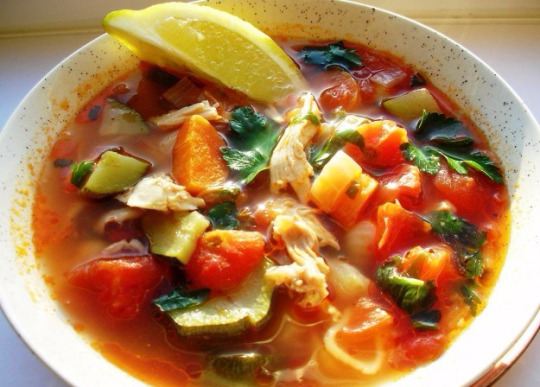
It might be difficult to accept, however the basic soup dish is extremely prevalent in Turkey so expect to discover a few Turks having it for breakfast. Prominent decisions are lentil or tomato soup yet in the event that you are bold with your culinary inclinations attempt tripe, sheep mind or tongue soup. Dark cabbage soup is customary toward the north east of Turkey, operating at a profit ocean district.
Kumpir : Baked Potato
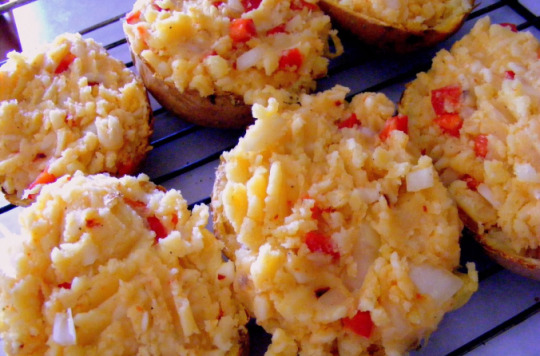
Kumpir is another type of road dish that is well known in the shoreline side resorts and urban areas. It is essentially a coat potato with a fresh external skin and delicate inside, squashed up with spread. Pick an assortment of fillings to finish it off, including cheddar, wiener, pickles, and Russian plate of mixed greens. On the off chance that you are in Istanbul, the most well known territory to eat it is Ortakoy.
Pide or Lahmacun
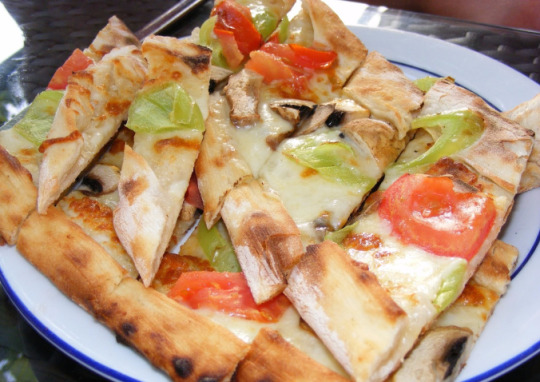
Pide is a prominent dish in lokantas, that are Turkish eateries serving modest and conventional Turkish nourishment. A thin outside layer of cake is secured with fixings including cheddar, egg, diced meat, chicken or fish and afterward it is placed it into a high warmth stone broiler. The closest equal western sustenance is pizza. Another form which is lighter is lahmacun. Both are customarily presented with serving of mixed greens. This is a perfect choice for veggie lovers the same number of fillings are accessible.
Kofte : Meatballs

Kofte is the Turkish adaptation of meatballs. Sold in a wrap as road sustenance or served on a plate with rice and plate of mixed greens in eateries. There are a wide range of sorts of kofte and their taste will change contingent upon the district that formula starts from. Çiğ kofte is irregular as it is crude meatballs starting from the south east of Turkey and these are generally eaten as a tidbit or starter.
Road kebab

There are more than 40 unique sorts of kebabs in Turkey however the most well known is the customary road kebab. Huge sticks of pivoting chicken or hamburger are cooked gradually before the cook cuts stripes from the outside of the stick, places them in a baked good wrap, and afterward fills it with lettuce, onions, and tomatoes. A road kebab is particularly tasty with a glass of Ayran. (Yogurt, salt and water.) Read more about Kebabs here.
Mezes : Appetizers
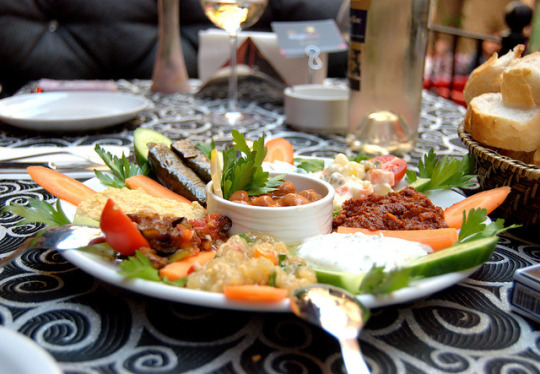
Mezes are canapés, customarily eaten before a supper or all alone as a tidbit. Well known mezes incorporate acılı ezme, a hot glue produced using peppers, patlıcan salatası (frosty aubergine plate of mixed greens) and cacik (yogurt, cucumber and garlic). Mezes are additionally the conventional nourishment served in the Meyhanes of Istanbul. More about this social convention.
Gozleme
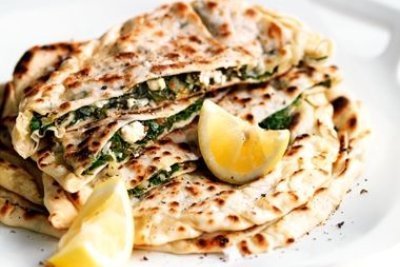
Shoddy, top notch and exceptionally filling, Gozleme is a well known road nourishment sold at nearby markets. Customarily considered the working man’s nourishment, it is layered baked good loaded with an assortment of fillings including spinach, cheddar, potatoes and parsley. Cooked on a vast flame broil and typically went with tea or Ayran, it is an ideal decision for lunch and perfect for individuals going on a financial plan.
Menemen

Menemen isn’t regularly observed on eatery menus however most kitchens will make it for you, as it is brisk and simple. Peppers, onions and tomatoes are fricasseed in a container and after that eggs are mixed into the blend. It is presented with new bread and delectable with homegrown olives.
Beverages
Alcoholic
Raki (pronounced [ɾaˈkɯ]) is the most popular alcoholic drink in Turkey. It is considered as the national alcoholic beverage of Turkey. There are a variety of local wines produced by Turkish brands such as Sevilen, Kavaklıdere, Doluca, Corvus, Kayra, Pamukkale and Diren which are getting more popular with the change of climatic conditions that affect the production of wine. A range of grape varieties are grown in Turkey.
Non-alcoholic
Turkish tea and delights on wooden background
Turkish individuals drink dark tea. Tea is made with two tea kettles in Turkey. Solid sharp tea made in the upper pot is weakened by including bubbling water from the lower.
Ayran (salty yogurt drink) is the most widely recognized cool refreshment, which may go with all dishes in Turkey, aside from those with fish and fish.
Şalgam suyu (gentle or hot turnip juice) is another critical non-mixed drink which is typically joined with kebabs or served together with rakı.
Boza is a conventional winter drink, which is otherwise called millet wine (served cool with cinnamon and once in a while with leblebi).
Sahlep is another most loved in winter (served hot with cinnamon). Sahlep is removed from the foundations of wild orchids and might be utilized as a part of Turkish frozen yogurt too. This was a famous drink in western Europe before espresso was brought from Africa and came to be known.
Sherbet (Turkish şerbet, articulated [ʃeɾˈbet]) is a syrup which can be produced using any of a wide assortment of fixings, particularly organic products, blooms, or herbs. Illustrations incorporate pear, quince, strawberry, apple, cornelian cherry, pomegranate, orange, flower petals, rose hips, or licorice and flavors. Sherbet is flushed weakened with icy water.
Sweets
OLYMPUS DIGITAL CAMERA
The baklava is somewhat of a “mille– feuille” of phyllo mixture (yufka in Turkish). In Turkey it is generally arranged by stuffing pistachios, nuts, or all the more once in a while almonds or hazelnuts between layers of yufka clears out. The city of Gaziantep in southeastern Turkey is well known for its baklava with pistachios and considers itself to be the origin of this dish.The Kunefe is a cake that is generally eaten in kebab eateries, it isn’t found in baked goods, since this is a sweet that must be eaten hot. Turkish delight,first known as the “rahat lokum”, signifying “rest of the throat” in Turkish, in light of the fact that these soft nibbles were pleasant to bite, the Turkish enjoyment is produced using cornstarch, sugar and natural product glue or nuts. It was an across the board confection among the women of high society amid their evening teas. Turkish pleasures were additionally utilized as an adoration confirmation among couples.Tavuk göğsü is a standout amongst the most famous treats in Turkey, its creativity lies in the way this is by one means or another a pudding produced using chicken bosom, rice, drain, sugar and cinnamon. Tavuk göğsü implies chicken bosom in Turkish.”Ayva tatlısı” implies quince dessert. These are half quinces cooked in a light syrup, at that point in the broiler lastly into a thicker syrup.Turkey, helva, whose historical underpinnings originates from the Arabic “halva” which implies sweet, assigns a few pastries made with tahini (sesame glue). These are sweets for the most part expended outside dinners. The three sorts of most basic helvas are :
– Tahin helvası : it is a minimal helva with a sesame base. He generally sold in the business sectors and in treat shops.
– Irmik helvası : it is a helva made of semolina likewise called the “winter helva”, it is regularly presented with a scoop of frozen yogurt.
– Un helvası : helva produced using wheat flour, it isn’t accessible economically, it is a natively constructed mourning. It is a Muslim convention to get ready helva and convey it to neighbors the seventh day, 40th day, and year in the wake of following a passing.
Health & Turkish food
As indicated by the researchers, it is conceded that cooking styles including high measures of natural product, vegetables, boring dishes and a direct measure of meat give more medical advantages as opposed to eating routine or garbage nourishments.
Eating Turkish food that is high in protein can fulfill your hunger at most extreme level, guaranteeing your insulin level adjusted after the dinner. Other than the taste, Turkish customary nourishment is solid because of its healthful esteem and never puts weight on your stomach.
Yogurt is the primary fixing utilized as a part of numerous Turkish dishes, plates of mixed greens, sauces and refreshments that have a great deal of medical advantages.
Olives are full stuffed of supplements and cell reinforcements. It is deductively demonstrated that the utilization of olive oil is superior to anything other vegetable oils as it is solid for the heart and has low fats.
Fish is utilized as a part of wealth in Turkish dishes, it is extremely helpful for human wellbeing. Slick fish is rich in Omega 3 fats and protein, and low in calories and fats. Fish utilized as a part of Turkish dishes is for the most part barbecued or heated in thwart that makes it more beneficial.
“Turkish cuisine is, to my mind, one of the most exciting and accomplished in the world”
Turkish cuisine:Legacy of Ottoman cuisine It is a nation on the planet which is truly genuine about the desire for its nourishment, it is Turkey.
1 note
·
View note